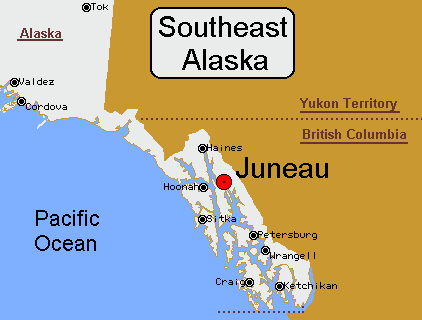ABOUT SOUTHEAST ALASKA!


SOUTHEAST ALASKA
Southeast Alaska is a combination of water and forested islands that create the state's famous Inside Passage. It stretches 500 air miles north/south and 100 miles east/west. Within these boundaries lie 1,000 islands; 15,000 miles of shoreline; America's largest national forest; one national park/preserve; two national historical parks; two national monuments; 12 national wilderness areas; thousands of coves, bays and bights; 15,000 bald eagles; 25,000 brown bears; 60 major glaciers; and 70,000 residents.
The Tongass National Forest, managed by the U.S. Forest Service, occupies 77% the Southeast Alaska land. At 16.8 million acres this is the largest national forest in the country and the world's largest temperate rain forest. The forest contains the largest tracts of virgin old-growth trees left in America.
The compressed geography means that ocean tidewater brushes against 4,000 foot mountains capped by glaciers and ice fields. About 20,000 years ago, during the Great Ice Age, virtually all of Southeast Alaska was covered by ice. Only peaks reaching above 5,000 feet reached through the glaciers. Today their sharp points contrast with rounded mountains that were smoothed by the glacial advance.
The ice retreated about 10,000 years ago. Then about 2,000 to 3,000 years ago there was another, though smaller, glacial advance called the Little Ice Age. Today's Southeast Alaska glaciers are remnants of this last advance. They're the ones that carved and polished the Southeast landscape we see today.
Today in Southeast there are three major ice fields: the 1,500 square mile Juneau Ice Field just behind the capital city, the slightly smaller Stikine Ice Field near the communities of Wrangell and Petersburg, and the Brady Ice Field in Glacier Bay National Park.
Another dominating part of the Southeast geography left behind by the glacier's retreat are the salt water fjords. Some still have active glaciers calving mammoth ice blocks into the ocean and creating one of Southeast's major visitor attractions.
There are over 33 communities scattered mostly on islands through Southeast. Juneau is the largest with about 30,000 people. Smaller fishing villages may have only a few hundred residents. Now, are you ready to plan your own trip or what?!?
